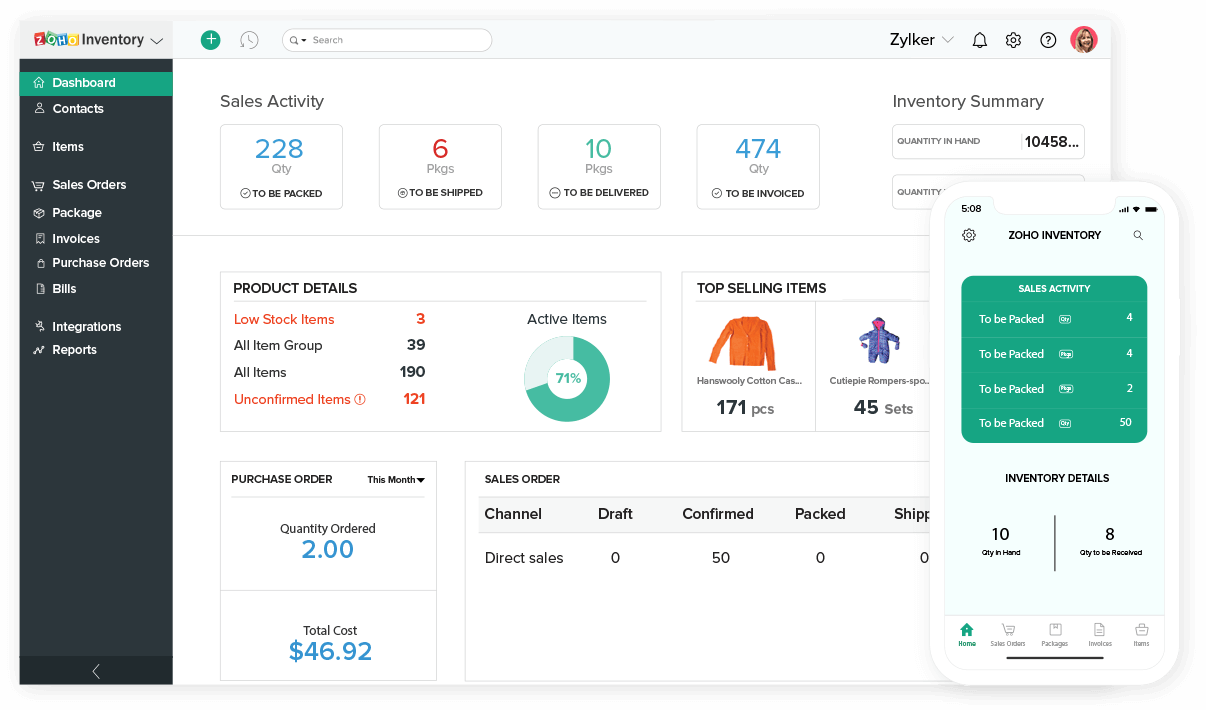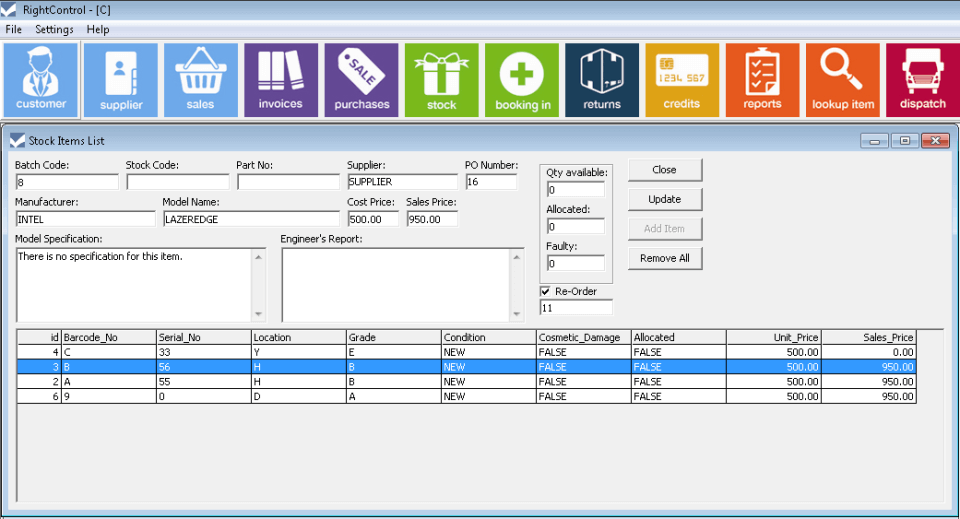Inventory management programs for small business are essential tools for streamlining operations, optimizing inventory levels, and boosting profitability. These programs provide a range of features and capabilities that can help businesses overcome common inventory challenges and improve efficiency.
From cloud-based systems to on-premise solutions, there are various types of inventory management programs available to meet the specific needs of small businesses. By understanding the key features and benefits of these programs, businesses can make informed decisions about which solution is right for them.
Inventory Management Challenges for Small Businesses
Inventory management is a critical aspect of running a successful small business, but it can also be a significant challenge. Small businesses often face unique challenges in managing their inventory, including limited resources, space constraints, and fluctuating demand.
These challenges can have a significant impact on business operations and profitability. Poor inventory management can lead to stockouts, which can result in lost sales and customer dissatisfaction. It can also lead to excess inventory, which can tie up cash flow and lead to spoilage or obsolescence.
Common Inventory Management Challenges for Small Businesses
- Limited resources: Small businesses often have limited financial and human resources to dedicate to inventory management. This can make it difficult to implement and maintain effective inventory management systems.
- Space constraints: Small businesses often have limited storage space, which can make it difficult to store inventory efficiently. This can lead to stockouts or excess inventory.
- Fluctuating demand: Small businesses often face fluctuating demand for their products. This can make it difficult to predict how much inventory to keep on hand.
Benefits of Inventory Management Programs
Inventory management programs offer numerous advantages for small businesses. They provide real-time visibility into inventory levels, enabling businesses to make informed decisions and optimize stock levels. These programs help businesses overcome inventory challenges such as overstocking, understocking, and shrinkage, leading to improved efficiency and profitability.
Streamlined Inventory Management
Inventory management programs automate inventory tracking and replenishment processes, reducing manual errors and saving time. They provide a centralized platform for managing inventory across multiple locations, eliminating the need for spreadsheets and manual updates.
Improved Stock Accuracy
These programs use barcode scanning or RFID technology to track inventory movements, ensuring accurate and up-to-date stock levels. This eliminates discrepancies between physical inventory and records, reducing the risk of stockouts and overstocking.
Optimized Inventory Levels
Inventory management programs analyze historical data and sales trends to determine optimal inventory levels. They generate alerts when stock levels reach predefined thresholds, helping businesses avoid both overstocking and understocking.
Reduced Costs
By optimizing inventory levels, businesses can reduce storage costs, minimize waste, and improve cash flow. Inventory management programs help businesses identify slow-moving or obsolete items, enabling them to clear out excess stock and reduce inventory holding costs.
Enhanced Customer Satisfaction
Accurate inventory tracking ensures that businesses can fulfill customer orders promptly and efficiently. Reduced stockouts and improved inventory availability lead to increased customer satisfaction and loyalty.
Features to Consider When Choosing a Program

Choosing the right inventory management program for your small business is crucial. Consider these essential features to ensure you select a solution that meets your specific needs:
Real-Time Inventory Tracking
Real-time inventory tracking provides an accurate and up-to-date view of your inventory levels. This allows you to avoid stockouts, overstocking, and ensures efficient order fulfillment.
Automated Inventory Replenishment
Automated inventory replenishment triggers purchase orders when stock levels reach a predetermined threshold. This feature ensures you have the right amount of inventory on hand, reducing the risk of stockouts and optimizing cash flow.
Multi-Location Inventory Management, Inventory management programs for small business
For businesses with multiple locations, multi-location inventory management allows you to track inventory levels across all locations in real-time. This enables efficient stock allocation and transfer between locations.
Inventory Forecasting
Inventory forecasting helps you predict future demand based on historical data. This feature allows you to optimize inventory levels, avoid overstocking, and plan for seasonal fluctuations.
Reporting and Analytics
Robust reporting and analytics capabilities provide insights into inventory performance, such as inventory turnover, cost of goods sold, and sales trends. This information helps you make informed decisions about inventory management and improve profitability.
Mobile Access
Mobile access allows you to manage your inventory on the go, track stock levels, and fulfill orders from anywhere. This feature is especially valuable for businesses with remote or field-based employees.
Integration with Other Systems
Integration with other systems, such as your accounting software or e-commerce platform, streamlines inventory management and reduces manual data entry errors.
Types of Inventory Management Programs: Inventory Management Programs For Small Business
Inventory management programs can be broadly categorized into three main types based on their deployment model: cloud-based, on-premise, and hybrid systems. Each type offers distinct advantages and drawbacks that cater to specific business needs and preferences.
Cloud-based Inventory Management Systems
Cloud-based inventory management systems are hosted on remote servers, accessible through an internet connection. These systems offer several advantages, including:
- Accessibility: Cloud-based systems can be accessed from anywhere with an internet connection, allowing for remote management and collaboration.
- Scalability: Cloud-based systems can easily scale up or down to meet changing business needs, without the need for additional hardware or infrastructure.
- Cost-effectiveness: Cloud-based systems often have lower upfront costs compared to on-premise systems, as businesses only pay for the services they use.
However, cloud-based systems also have some disadvantages:
- Internet dependency: Cloud-based systems require a stable internet connection to function, which can be a limitation in areas with unreliable connectivity.
- Security concerns: Some businesses may have concerns about the security of their data stored on third-party servers.
- Limited customization: Cloud-based systems often offer less customization options compared to on-premise systems.
On-premise Inventory Management Systems
On-premise inventory management systems are installed on the business’s own hardware and servers, located within their physical premises. These systems provide several advantages, including:
- Customization: On-premise systems offer a high degree of customization, allowing businesses to tailor the system to their specific requirements.
- Data security: Businesses have complete control over their data, stored on their own servers, reducing security concerns.
- Reliability: On-premise systems are not dependent on internet connectivity, ensuring uninterrupted operation even during internet outages.
However, on-premise systems also have some disadvantages:
- High upfront costs: On-premise systems require significant upfront investments in hardware, software, and IT infrastructure.
- Maintenance and updates: Businesses are responsible for maintaining and updating the system, which can be time-consuming and costly.
- Limited scalability: On-premise systems can be difficult to scale up or down quickly, as it requires additional hardware and infrastructure.
Hybrid Inventory Management Systems
Hybrid inventory management systems combine elements of both cloud-based and on-premise systems. These systems offer the benefits of both models, such as:
- Flexibility: Hybrid systems allow businesses to store critical data on-premise while leveraging cloud-based services for non-essential tasks.
- Scalability: Hybrid systems offer scalability, allowing businesses to expand their cloud-based capacity as needed without investing in additional on-premise infrastructure.
- Cost-effectiveness: Hybrid systems can be more cost-effective than fully on-premise systems, as businesses only pay for the cloud services they use.
However, hybrid systems also have some disadvantages:
- Complexity: Hybrid systems can be more complex to implement and manage compared to single-deployment models.
- Data security: Hybrid systems may introduce additional security risks, as data is stored in both on-premise and cloud environments.
- Limited customization: Hybrid systems may offer less customization options compared to fully on-premise systems.
Best Practices for Inventory Management

Effective inventory management is crucial for small businesses to optimize their operations, reduce costs, and improve customer satisfaction. By implementing best practices, businesses can streamline their inventory processes, minimize waste, and ensure accurate inventory records.
Here are some key best practices for inventory management in small businesses:
Establish a Clear Inventory System
- Implement a systematic approach to inventory management, including clear procedures for receiving, storing, issuing, and tracking inventory.
- Use inventory management software or a spreadsheet to maintain accurate records of inventory levels and transactions.
- Assign specific roles and responsibilities for inventory management to ensure accountability.
Optimize Inventory Levels
Maintain optimal inventory levels to avoid stockouts and overstocking. Use inventory forecasting techniques to predict demand and adjust inventory levels accordingly.
- Implement a safety stock level to prevent stockouts during unexpected demand fluctuations.
- Use the Economic Order Quantity (EOQ) formula to determine the optimal quantity to order at a time.
- Conduct regular inventory audits to ensure accuracy and identify any discrepancies.
Reduce Waste
Minimize waste by implementing strategies to reduce spoilage, damage, and obsolescence. Use FIFO (First-In, First-Out) or LIFO (Last-In, First-Out) inventory valuation methods to ensure that older inventory is sold first.
- Establish clear guidelines for handling and storing inventory to prevent damage.
- Monitor inventory expiration dates and implement a system to sell or dispose of expired items promptly.
- Review inventory regularly to identify slow-moving or obsolete items and take appropriate action.
Improve Inventory Accuracy
Ensure accurate inventory records by implementing regular inventory counts and reconciling them with inventory management system data.
- Use barcode scanners or RFID tags to improve the accuracy of inventory counts.
- Train staff on proper inventory counting procedures.
- Conduct regular inventory cycle counts to identify and correct any discrepancies.
Case Studies of Successful Inventory Management
Implementing effective inventory management programs can significantly benefit small businesses. By optimizing stock levels, businesses can reduce costs, improve customer satisfaction, and streamline operations. Here are some case studies that demonstrate the successful implementation of inventory management programs in small businesses:
A Retail Store’s Success with Inventory Optimization
A small retail store struggled with managing its inventory, leading to stockouts and excess inventory. They implemented an inventory management program that integrated with their POS system, providing real-time inventory visibility. The program used data analytics to forecast demand and optimize stock levels, resulting in:
- Reduced stockouts by 50%
- Decreased excess inventory by 25%
- Improved customer satisfaction due to increased product availability
Final Review

In today’s competitive business landscape, effective inventory management is crucial for small businesses to succeed. By leveraging the power of inventory management programs, businesses can gain a competitive edge, improve customer satisfaction, and drive growth.
Question Bank
What are the common inventory management challenges faced by small businesses?
Small businesses often face challenges such as inaccurate inventory counts, overstocking, stockouts, and inefficient inventory tracking.
How can inventory management programs help small businesses overcome these challenges?
Inventory management programs provide features such as real-time inventory tracking, automated reordering, and demand forecasting, which can help businesses optimize inventory levels, reduce waste, and improve accuracy.
What are the key features to consider when choosing an inventory management program for a small business?
Key features to consider include ease of use, scalability, integration with other business systems, and the ability to handle multiple locations and complex inventory structures.